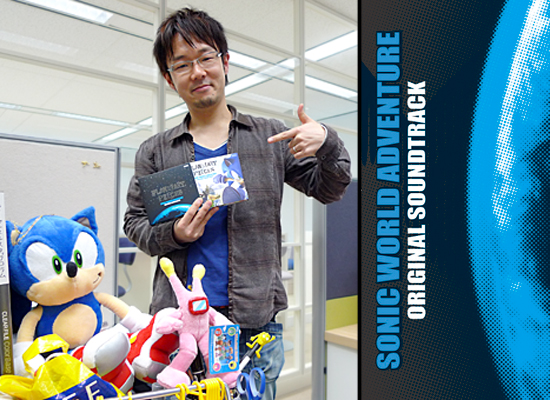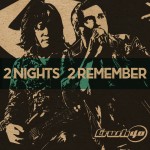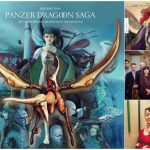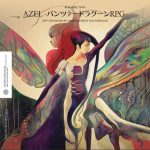A good Sonic the Hedgehog soundtrack? Well, I know a lot of people enjoyed the peppy soundtracks featured in the Sonic Adventure titles, but I miss the old days of catchy melodies and memorable musical moments. I think the huge team at SEGA delivered this with Sonic Unleashed, which I told everyone I loved in our review last month.
Well, I loved it so much that I looked into getting some time with Sonic Unleashed lead composer Tomoya Ohtani, and he has some interesting comments about the soundtrack. He acknowledges that the team took a different approach with Sonic Unleashed in terms of both scale and style, and even say she prefers having fewer vocal tracks in the game. Here’s hoping that they kept this up with Sonic and the Black Knight which was just released!
Hit the jump for our interview with SEGA’s Tomoya Ohtani.
OSV: Hello. Thank you very much for taking the time to speak with us about the music featured in Sonic Unleashed (also known as Sonic World Adventure in Japan). The title featured the work of at least six composers from SEGA, including yourself, Kenichi Tokoi, Fumie Kumatani, Hideaki Kobayashi, Takahito Eguchi, and Mariko Nanba. Can you start by telling us a little about the team members and how it was decided that everyone would be contributing to this game’s soundtrack?
Ohtani: Thank you in advance. As to the Sonic Unleashed music production, I was the first one to join the project as a sound producer and a main composer. I then started composing when the music direction was finalized after I had numerous discussions with Mr. Hashimoto, the Director. For the tracks I did not compose myself, composers suited to each music genre were selected to be commissioned one by one, who happened to be my 5 other team members, and I think they have done a wonderful job.
OSV: In the recent past, Sonic soundtracks have featured mainly upbeat vocal themes instead of the kinds of catchy instrumental pieces featured in Sonic Unleashed. What went into the decision to change the approach this time around? Do you feel the change in approach paid off?
Ohtani: Yes, I am very satisfied with the final work. For this title, we limited the main theme (vocal theme) to just 2 tracks, as we thought symbolic tracks should only be present in the important scenes, which should be enough.
In the beginning, Mr. Hashimoto requested me to challenge composing an orchestra-esque theme song that sounds like a master piece, so I did. As to the music in the games, we tried to produce instrumental music which fused live music with various ethnic instruments and contemporary sound elements, since the story is about traveling around the world, the regional characteristics of the visited country needed to be expressed in the music. I believe we made tracks in rich variation which appeal to wide range of people.
OSV: Along with the different ethnic regions represented in the game, and therefore the music, there’s also a large variety of musical genres represented in the soundtrack. From orchestral music for the game’s menus, to jazzy boss themes and the usual vocal pieces, there are a lot of different ideas going on here. How did the team agree to include such a wide variety of musical genres and recording styles?
Ohtani: From vocal tracks, orchestra, big band jazz, to ethnic instruments, depending on the type and scale of the recording, the recording session was scheduled when the musicians, recording studio, and recording engineer had been arranged. Since the session scale varied in size from small to big, we hired 4 to 5 external recording coordinators handle the hectic schedule.
OSV: I had a question regarding one of Tokoi-san’s tracks. Two of my favorite tracks in the game are “Spagonia – Night” and “Chun-nan Night.” I’m wondering what inspired these amazing pieces of music. I was also hoping you could tell us about the challenges the team faced creating different variations of the music for the night and day themes featured in the game.
Ohtani: To express the regional characteristics in the music clearly, we chose an instrument to represent each country to develop our imagination from there before we actually started composing. For example, “Bamboo Flute” for Mazuri, “Accordion” for Spagonia, “Erhu” for Chun-nan, “Gamelan” for Adabat, etc. Those instruments were played and recorded live. One of the important challenges was to express the difference of day and night stages in music. For the tracks in the town scene, we succeeded in keeping the style consistent by arranging 2 patterns of day and night based on one motif melody prepared per country, to have tracks with 2 different atmosphere.
OSV: With such a large group of composers, who was responsible for managing the group and monitoring the team’s output to ensure it all came together as a cohesive soundtrack in the end? Did everyone work independently, or were there regular meetings to ensure to project was on track? Did the team learn any lessons from working on this massive project?
Ohtani: I directed all of the music of this soundtrack and brough forward this project. We wanted this soundtrack to be cohesive and also varied. I directed each composer individually, so we did not have any kind of regular composer team meetings. I believe that for a big projects with so much music like Sonic Unleashed, there should be an elaborate compose plan and quality control.
OSV: How long did it take for the team to complete this soundtrack? While there were a lot of composers involved, there is a lot of music featured in the game. Is all of it presented on the game’s official soundtrack?
Ohtani: We spent 9 month to complete this soundtrack from the pre-production, and all the music is featured on the SONIC WORLD ADVENTURE ORIGINAL SOUNDTRACK PLANETARY PIECES.
OSV: What tools were used by the various composers to create the score? Given the variety of musical genres, perhaps you can comment about just how large of an undertaking it was to create this soundtrack.
Ohtani: For the tools to compose music, each composer uses familiar sequencers, sound sources and many other tools (Logic, Cubase, Digital Performer, etc.). For the mixdown of the live music we all used Pro Tools. Also we often used a lot of MIDI programming using commercially available sample libraries and synthesizers, but also used a lot of live musicians. We took the best approach depending on desired genre and the texture of each song.
OSV: There are a massive number of session artists featured on this album, and even the Tokyo Philharmonic Orchestra was recorded. Did the team members enjoy the opportunity to work with live musicians rather than dealing with sample libraries, as is customary in game music? Does this perhaps represent a shift in SEGA’s philosophy to include more live music in games?
Ohtani: Recording of live music is always exciting to do. I talked with each composer to make a plan for recording (like which instrument to use or which instrument to substitute with the programming). It is not so special for us to use live music because the SEGA sound team has used a lot of live music in the past. But this time, the number of the musicians that were involved is biggest among this series and almost 100 musicians like Jaret Reddick from Bowling for Soup and the Tokyo Philharmonic Orchestra. We were able to make this gorgeous soundtrack by making sure all these elements came together.
OSV: The three-disc soundtrack was just released in Japan, and looks to be very popular. Congratulations on this achievement. What does the team see as the reason that this soundtrack is so successful? Will we see large-scale collaborations like this in the future at SEGA?
Ohtani: Thank you. A big title such as Sonic Unleashed requires many tracks, and there are nearly 90 tracks existing for this title as well. Music created under this previously mentioned elaborate planning sounds wonderful and functions effectively in the game, with each piece serving its own purpose. As a result, every track ended up sounding nice. I think the planning prior to the composition is most important, and I believe that we could have created this soundtrack with a consistent concept. I hope I can produce the best soundtracks depending on the scale of the project.
OSV: I noticed in the booklet that composer Naofumi Hataya was given a special thanks. What role did he play in the creation of the Sonic Unleashed soundtrack? Whose idea was it to create the ultra-cute miniature-sized booklet for the album release?
Ohtani: Mr. Hayata did not participate in the music production, but since he is the sound section manager of SEGA, it was necessary to consult with him for assigning human resource. The special thanx was mentioned in that sense.
As to the overall packaging design including the sound track booklet, I presented the idea and casted it into shape, consulting with the designers. We tried to make a CD jacket with a high quality look with unique and playful visuals all over so that the fans could feel happy as they pick it up.
OSV: I imagine the team is quite proud of this soundtrack. Do the team members have any comments looking back at their work on the title, and do they have anything to say to fans of the game and its music?
Ohtani: Even from this point on, we will stick to game soundtracks with original music especially composed for the game only. I hope you enjoy this soundtrack which offers most abundant variation presented in the biggest scale ever in the Sonic franchise history.
OSV: Can the team members comment on what they’ll be working on next?
Ohtani: Unfortunately there is no project I can mention at moment, but (in my next work,) I will compose sound tracks which all of you would be surprised, so please look forward to it.










































I hate the romanization of the long O in Japanese to “Oh.”
Stupid.
[…] strings, violin, hurdy gurdy, and other instruments? Not quite as many composers as featured on the Sonic World Adventure soundtrack from earlier this year, but this one definitely gets some bonus points for the variety […]
Brandon, you are an anal cunt.